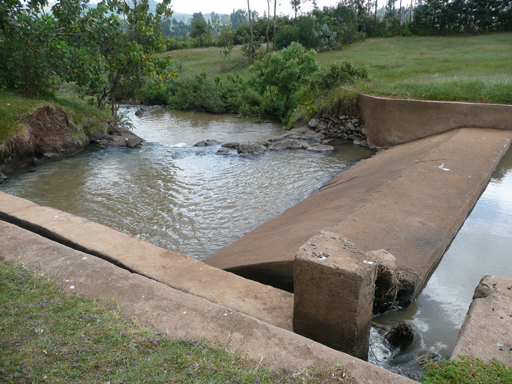4.3.1 Surface water
Rivers, streams, lakes, and ponds are widely used as water sources in Ethiopia, especially in rural areas (Figure 4.5). The amount of available surface water depends largely on rainfall. When rainfall is limited, the supply of surface water will vary considerably between wet and dry seasons and also between years. One way to overcome this problem is to construct a dam across a river to create a reservoir that provides water storage. Large surface water reservoirs may be used for hydroelectric power generation, regulating water releases to control river flows, for recreational purposes and to provide water for agricultural, municipal and industrial uses. Smaller dams are also used to enable irrigation (Figure 4.6). The water collects behind the dam and flows under gravity into irrigation channels leading to the fields.


4.3 Sources of water
